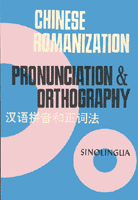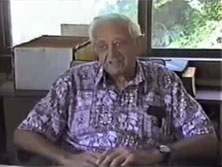 The first large section from Chinese Romanization: Pronunciation and Orthography to go online is the one on proper nouns (2 MB PDF).
The first large section from Chinese Romanization: Pronunciation and Orthography to go online is the one on proper nouns (2 MB PDF).
- Introduction
- Place Names
- Personal Names
- formal names
- non-formal names
- forms of address
- Transliteration of Foreign Place Names and Personal Names
- Other Proper Nouns
- names of nationalities
- names of religions and deities
- names of dynasties
- names of festivals and holidays
- names of celestial bodies
- names of languages
- titles of literary and artistic works
- titles of newspapers and magazines
- names of social units
- trademarks
- Proper Nouns in Combination with Common Nouns
Thus, these rules cover many of the applications of Pinyin that appear on signage.
I’ll post a version with OCR later (probably weeks or months rather than days). In the meanwhile, you can use the bookmarks within the PDF file to navigate the document.
further reading:

